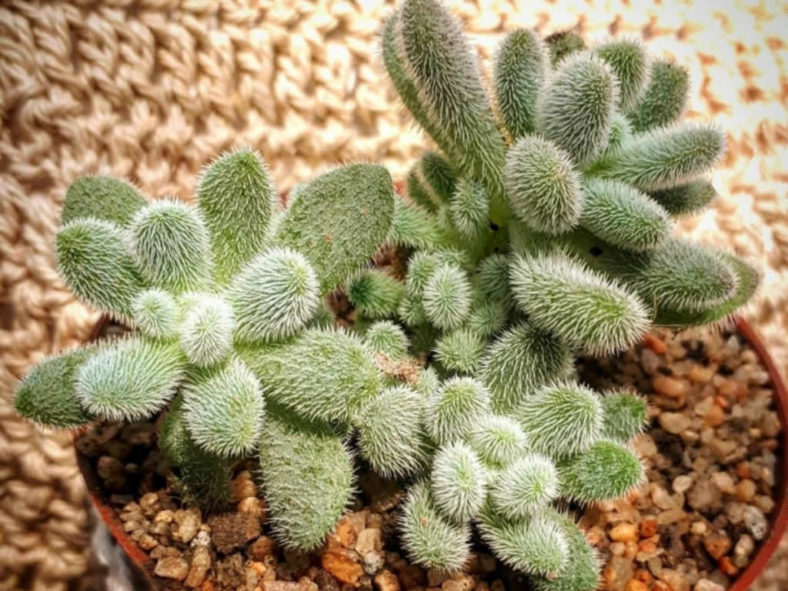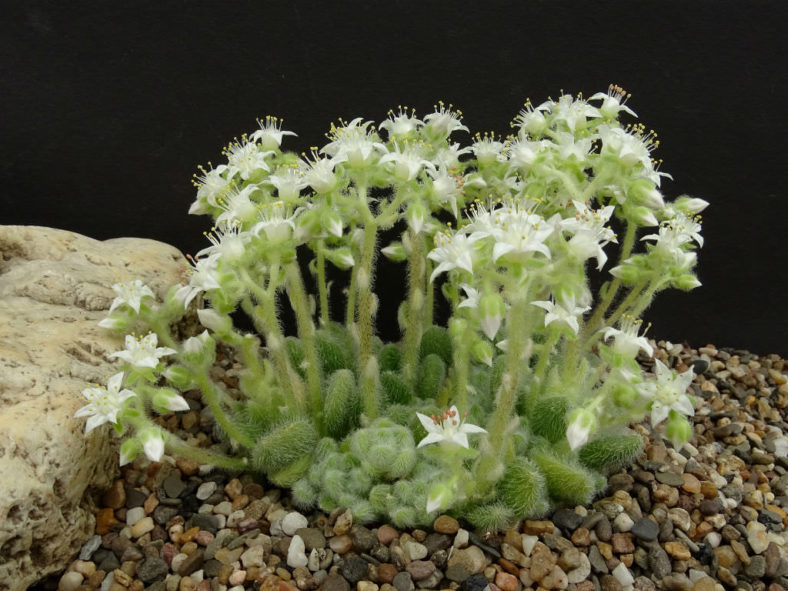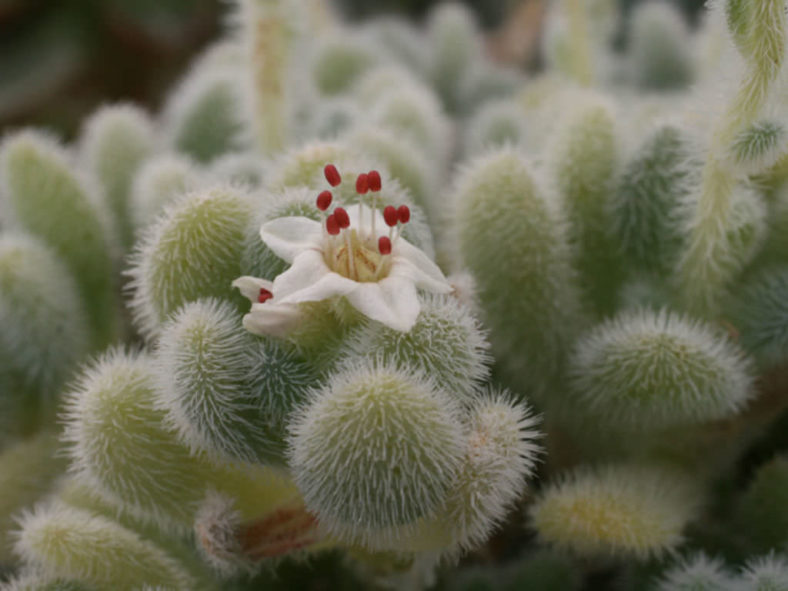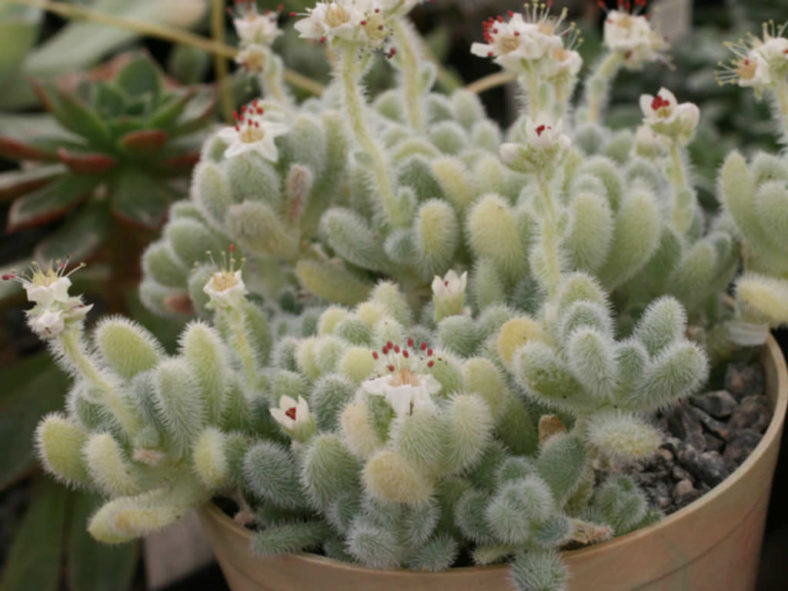Scientific Name
Sedum mocinianum Pérez-Calix
Scientific Classification
Family: Crassulaceae
Subfamily: Sempervivoideae
Tribe: Sedeae
Genus: Sedum
Etymology
The specific epithet "mocinianum (mo-kin-ee-AY-num)" honors Jose M. Mocino (1757-1820), a Mexican botanist and a member of the Spanish Royal Botanical Expedition between 1787 and 1803.
Description
Sedum mocinianum is a succulent plant with leaves arranged in a dense rosette at the end of hanging stems. It is one of the most attractive of all Sedums. The stems can grow up to 32 inches (80 cm) long and 0.2 inches (0.5 cm) in diameter. The leaves can measure up to 1 inch (2.5 cm) long and 0.4 inches (1 cm) wide. The stems, leaves, peduncles, bracts, sepals, and branches of the inflorescence are densely pubescent with hyaline hairs.
The little, white, five-petaled flowers with dark red anthers appear clustered into a short inflorescence in late winter and spring. They have a somewhat unpleasant, though not very strong, odor.

Hardiness
USDA hardiness zones 9b to 11b: from 25 °F (−3.9 °C) to 50 °F (+10 °C).
How to Grow and Care
When growing Sedums, keep in mind that these plants need very little attention or care. They will thrive in conditions many other plants thrive in but do just as well in less hospitable areas. They are ideal for that part of your yard that gets too much sun or too little water to grow anything else. A common name for Sedum is Stonecrop because many gardeners joke that only stones need less care and live longer.
Sedum is easily planted. For shorter varieties, laying the plant on the ground where you want it to grow is usually enough to start it there. They will send out roots from wherever the stem touches the ground and root itself. If you want to ensure the plant starts there, add a very thin soil covering.
You can break off one of the stems for taller varieties and push it into the ground where you want to grow it. The stem will root very easily, and a new plant will be established in a season or two.
See more at How to Grow and Care for Sedum.
Origin
Sedum mocinianum is native to northern Mexico. Unfortunately, this species was twice distributed by ISI, both times (ISI 174 in 1959, then ISI 91-60 in 1991) under the wrong name, Sedum hintonii.
Links
- Back to genus Sedum
- Succupedia: Browse succulents by Scientific Name, Common Name, Genus, Family, USDA Hardiness Zone, Origin, or cacti by Genus
Photo Gallery
Click on a photo to see a larger version.


